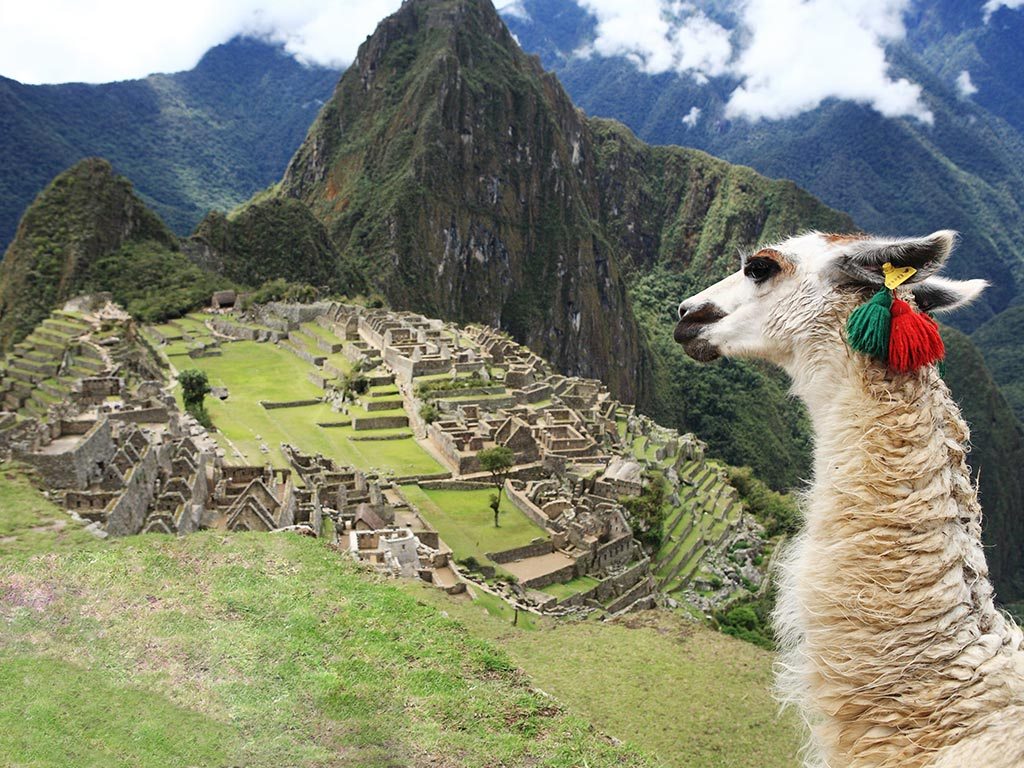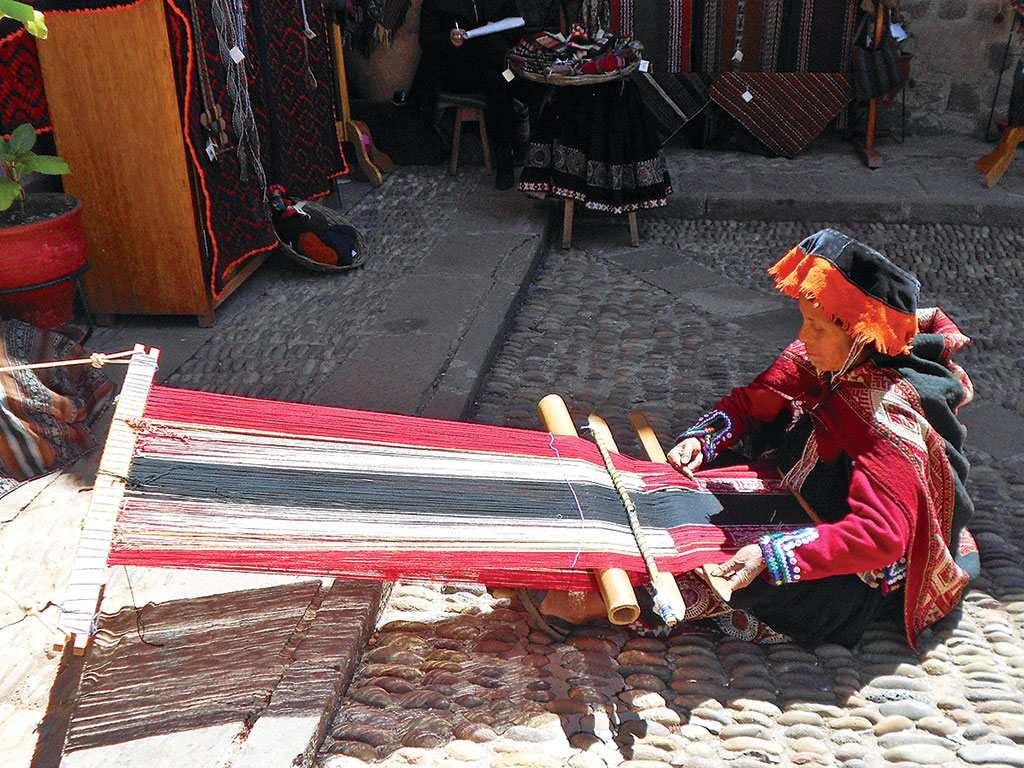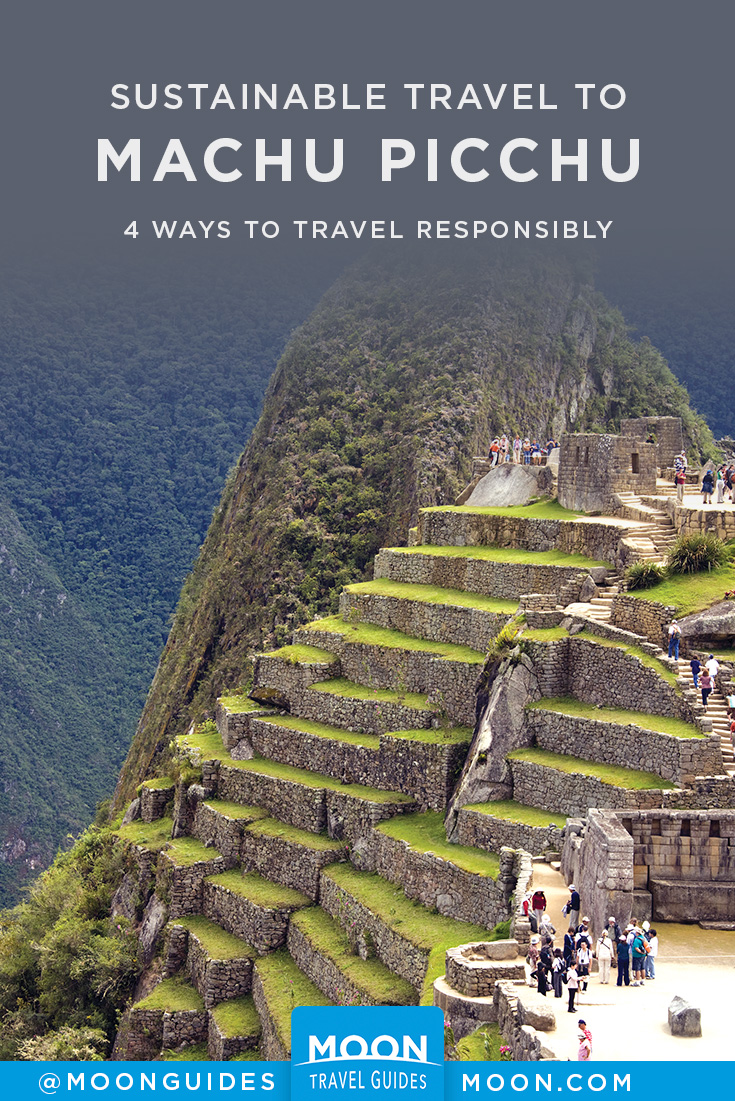Visiting Machu Picchu: 4 Tips for Responsible Travel
Peru’s tourism has seen a massive boom in recent years. More than 3,000 tourists per day trample the grounds of the ancient Inca city, well above the limit set by UNESCO. Such popularity comes at a price: Because Machu Picchu is built on a humanmade mound of earth, the ground is comparatively soft and the site is actually sinking, albeit very slowly. Due to the influx of tourists, Peru is implementing new measures to visit Machu Picchu in order to ensure sustainability, including establishing two entry windows (6am-noon and noon-5:30pm), predetermined paths for tourists to walk on while in the sanctuary, and time limits at specific spots in the ruins.
If you’re headed to Machu Picchu, there are plenty of ways for you to minimize your environmental impact while making the most of your trip of a lifetime! Here’s where to start.

Pass on Plastic
Every time travelers buy a plastic water bottle, they are contributing to a waste problem that is reaching epic proportions all over Peru. Nearly 200 million plastic bottles are produced every month in Peru alone, and a good chunk of these are consumed by tourists—who understandably need a few liters of purified water for each day in Peru. Here’s what you can do to help:
- Carry a reusable hard plastic water bottle and fill it with treated or boiled water.
- Buy sodas and water in refillable glass bottles.
- Request that your hotel provide water tanks (bidones) or at the very least boiled water for refilling bottles.
- Reuse plastic bags over and over and do not accept new ones.
- Spread the word!
Pick a Responsible Trekking Agency
Among the more than 150 licensed trekking agencies operating in Cusco, the standards of service and social and environmental responsibilities vary greatly. It’s important to be discerning and to research thoroughly before booking. Andean Treks, ExplorAndes, and Tambo Tours are a few great choices: Not only is their experience and professionalism unsurpassed, but they consistently recycle their trash, pack out all human waste, treat water carefully, and pay porters fair wages.
Shop Local
From beautiful crafts and Andean paintings to gorgeous ceramics and weavings, there are tons of souvenir options to bring home from your adventure, and they can be a great way to support the local economy.
A great association in Cusco, run by the altruistic Franco Negri, is Casa Ecológica (Portal de Carnes 236, interior 2, cell tel. 984-117-962, 9am-9:30pm daily), which was created to promote sustainable development in rural communities. The shop sells traditional crafts produced with natural fibers, as well as organic cosmetics and food products.
You’ll find some of the highest-quality textiles for sale in all of Cusco at the Centro de Textiles Tradicionales del Cusco (Av. El Sol 603, tel. 084/22-8117, 7:30am-8:30pm daily). Nilda Callañaupa, a weaver and scholar from Chinchero, set up the center with the admirable goal of recovering ancient technologies, showcasing high-quality weavings, and sending revenue straight back to the remote, neglected villages that produce them. Local weavers give daily demonstrations, and there are displays that explain all the plants, minerals, and berries used for natural dyes.

Volunteer!
Why not give back to the community while you’re there? There are hundreds of volunteer opportunities in Peru involving art and culture, community development, disability and addiction services, ecotourism and the environment, education, health care, and services for children and women. Although these organizations don’t pay salaries, they often provide food or accommodation in exchange for your time.
The nonprofit Mundo Azul (Lima tel. 01/447-5190) is dedicated to conserving natural biodiversity, and its volunteers play a firsthand role in helping that mission happen. The two-week to monthlong volunteer programs take participants to the ocean to research dolphin populations or dive into open water to collect marine species. (Only experienced divers can apply for the latter option.) A rainforest trip to Manu involves researching tapirs, macaws, and giant river otters. Lima’s Voluntario is a solid resource that hooks up volunteers with organizations. There are also many Peru-based volunteer organizations: check out Lucho Hurtado’s programs in Huancayo; the Center for Social Well Being organization in Carhuaz in the Cordillera Blanca; and Awamaki in Ollantaytambo.
Related Travel Guide
Pin it for Later
